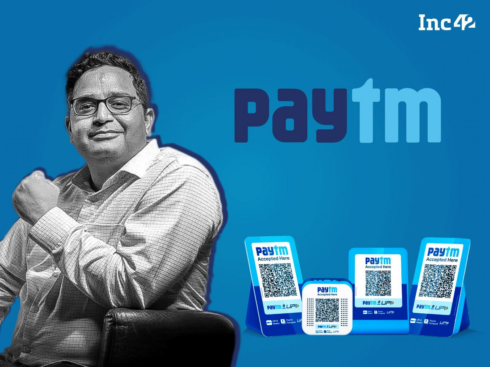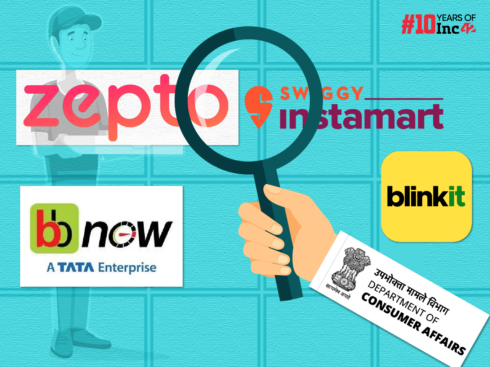SUMMARY
In the past couple of years, the payments enabler consistently grew its transaction volume by more than 500% year on year to become one of the largest players in this space
Razorpay was in the right market at the right time to capitalise on the Covid-19 opportunities. But the heady growth would not have been possible without its efficient but simple products, easily integrated by small businesses
Despite a firm focus on the north star metric of payment success rate, Razorpay’s product team also looks at other metrics such as the time taken to onboard a merchant and improving transaction speed
India’s Product Matrix
How do India’s top product startups ideate, build, test and iterate? This playbook explores through the lens of BYJU’s, Swiggy, BigBasket, Razorpay, Dunzo and ShareChat.
Mention super-apps and people mostly think of consumer tech companies developing ‘sticky’ platforms with various products and services to increase customer lifetime value or CLV. It is the holy grail of every B2C company. But of late, a B2B fintech company has quietly adopted the same strategy to accelerate growth. The results are already showing for Bengaluru-headquartered Razorpay. After operating for six years and a half and raising $206.6 Mn, the company joined the coveted unicorn club in 2020.
Set up in 2014 by Harshil Mathur and Shashank Kumar, Razorpay had a clear vision of the future as the digital era was maturing fast and businesses were ready to embrace the new approach. But the pain point could not be ignored as new-age merchants, especially small businesses, required payment integration across apps and websites not only for seamless operations but also because they wanted to grow across boundaries. Moreover, those were the pre-demonetisation years when most people were not familiar with digital wallets, and the Unified Payments Interface (UPI) did not exist. A homogeneous payments processing experience was the need of the hour and Razorpay lived up to that.
In the past couple of years, the payments enabler consistently grew its transaction volume by more than 500% year on year to become one of the largest players in this space. But the founders are not content. Using its user base as a funnel, the fintech firm is rapidly expanding into neobanking services such as small-ticket loans, automated salary payments and B2B payments for merchants, in a bid to become an end-to-end solutions provider for online businesses.
However, its core competencies lie in payments solutions and related product innovations. That is why investors bet on its growth story. Online payments processing accounts for 80% of its revenue as the company currently serves 5 Mn businesses, up from 1 Mn a year ago, and has the likes of Airtel, BookMyShow, Facebook India and Sony as its customers.
As the Covid-19 pandemic triggered large-scale digital adoption, Razorpay witnessed a massive rise in the number of customers just like other digital payments companies. Its 300% growth in transactions within six months also played a crucial role in propelling the company to its current unicorn status. In October last year, it clocked an annual payment volume run rate of $25 Bn, a 400% rise from $5 billion it had posted in the previous year.
Undoubtedly, the company was in the right market at the right time to capitalise on Covid-19 opportunities. But the heady growth would not have been possible without its efficient but simple products, easily integrated by small businesses. Let us take a look at the product frameworks and practices which led to its success.
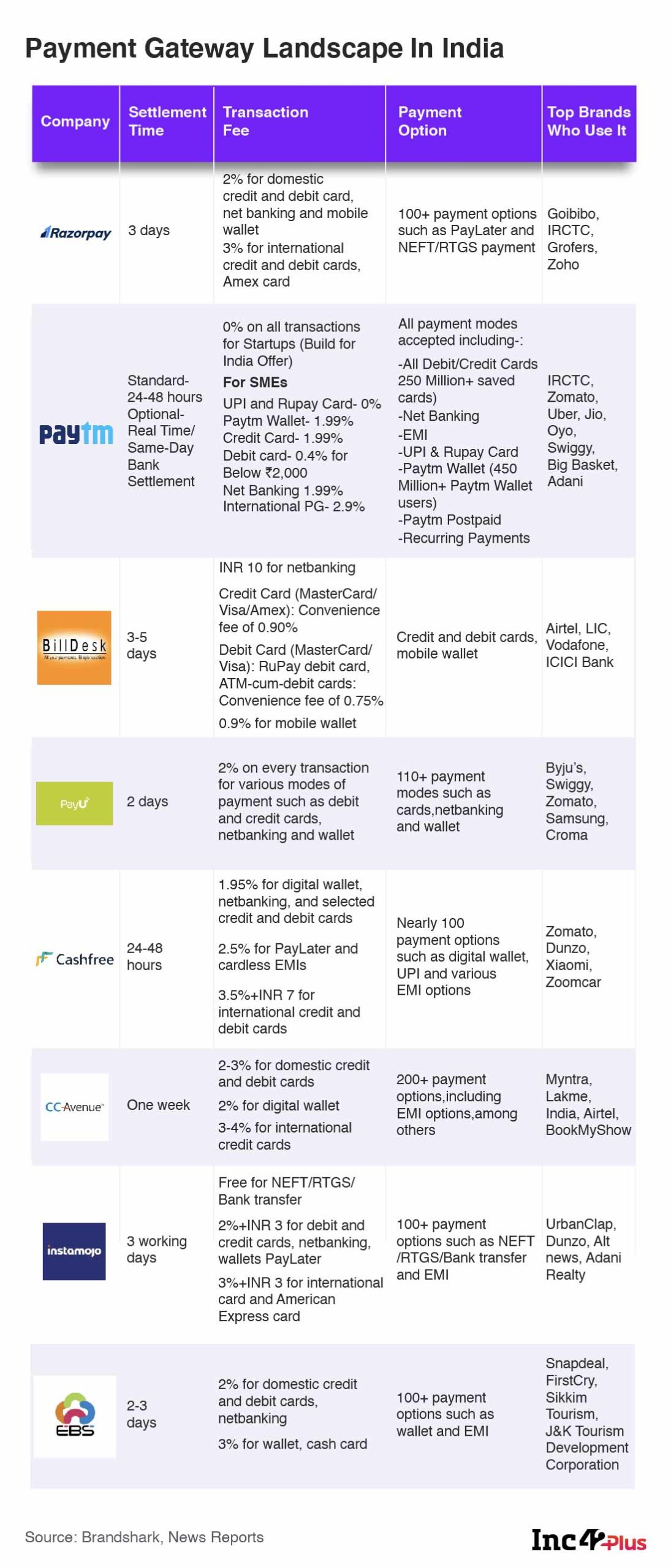
The Matrix Of Metrics And Customer Needs
When Razorpay started its operations in 2014, payment gateway companies in India were still struggling to ensure that most user-initiated transactions should go through. The success rate of payments on card purchases was not more than 60-65% in 2013. And Snapdeal founder Kunal Bahl reportedly told Business Today, “Even a 1% improvement in success rates can add INR 20 Cr to our top line.”
This is why the payment success rate — the percentage of payments which go through after transactions are initiated on websites or apps — is the north star metric for any player in this space.
“The reasons for a payment failure can be many, right from low balance, incorrect OTP and poor internet connection to glitches on the merchant integration side,” says Khilan Haria who leads the payments products at Razorpay.
As the success rate depends on so many factors beyond the control of the payment gateway, the company also looks at other metrics such as the time taken to onboard a merchant and improving the speed of transactions. According to Haria, one of the earliest differentiators for Razorpay was that merchants only needed to upload a few documents and could accept online payments after 30-40 minutes.
However, improving the success rate remains the most critical factor that calls for innovation, and it mostly impacts small online merchants. A user is likely to return to Flipkart or Amazon for the second time to complete a purchase, but may not come back to small sellers if the payment fails.
A big reason for transaction failure during online card checkouts is that the 16-digit number is not always handy. While big players design their checkouts and enable users to save card numbers on their platforms, small sellers do not have the resources to develop their systems.
This is where the payments giant saw an opportunity — that of building a checkout page where a user, who saves a card for one merchant, can use it for other merchants for hassle-free online transactions.
“Razorpay Checkout is now used by 95% merchants, and it has helped improve the success rate metric by 3-6%,” says Haria.
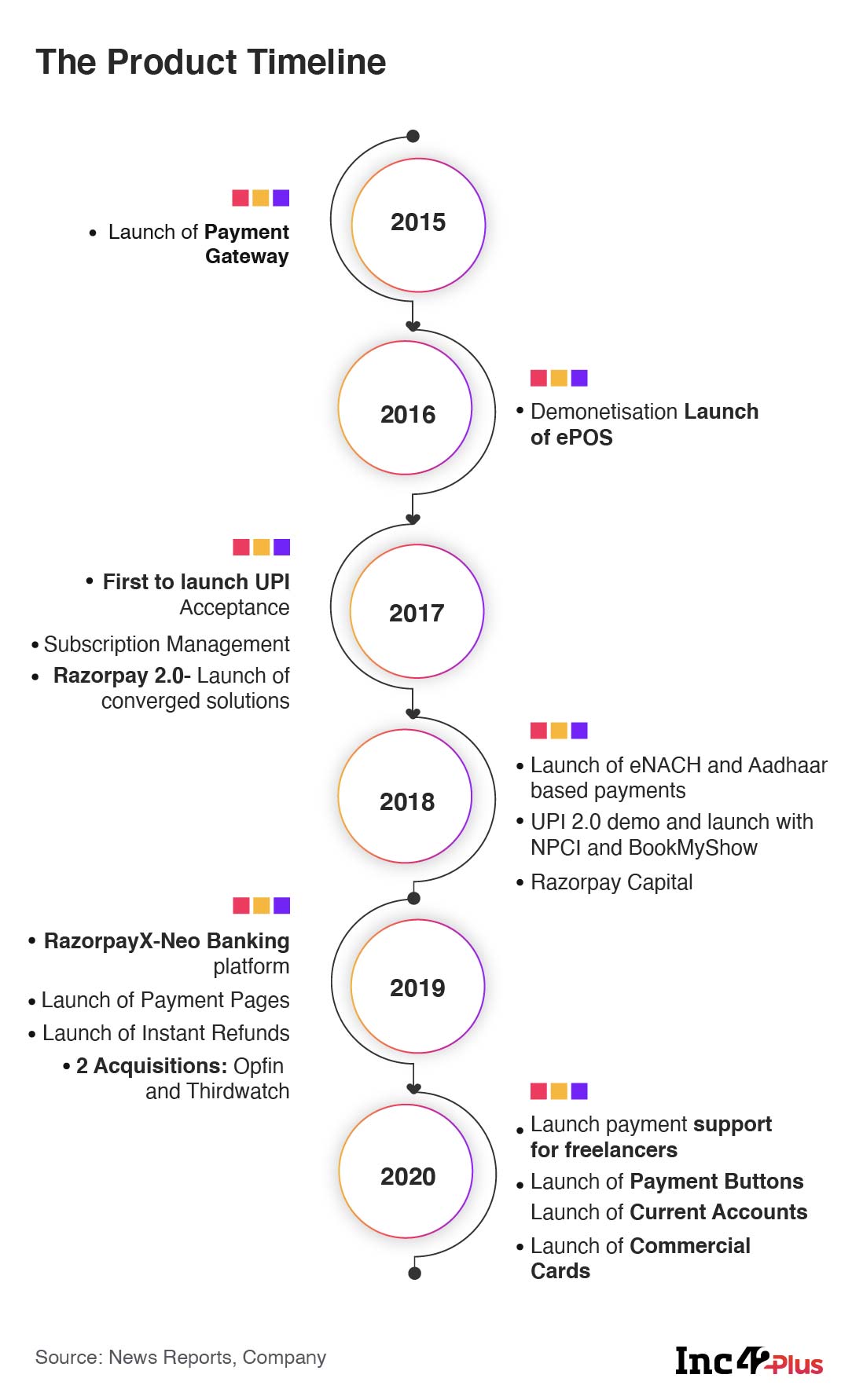
How Interacting With Merchants Helped
For most internet products, the metrics which usually matter are customer retention and the net promoter score that indicates how favourably an existing user mentions a product to others. But these are lagging metrics as they take time to manifest after a product is launched. Every sector may have specific leading metrics, such as the success rate of payment gateways, which will instantly tell the company if the product in its current avatar will be a hit or miss.
When digital wallets and the UPI grabbed a huge chunk of digital payments, processing refunds also became a major issue as these platforms were still trying to cope with the volume of new users. Razorpay built a new product for faster refunds, but several merchants continued with the earlier solution instead of paying additional fees. Not a prudent decision as the previous product was built around older formats of payments, mostly cards and net banking. So, the problem continued.
For online merchants and consumers, refunds getting stuck is a bad experience, irrespective of how big or small the amount is. This issue did not reflect at first in the success rate as it aggregates all transactions but cropped up in the lagging indicators like the NPS and the churn rate (percentage of users who stop using a platform over time).
“It was ‘code red’, and we realised that some of our hypotheses around the refund experience with the new instruments were wrong. We were under the assumption that we would be able to educate the merchants that those were not Razorpay’s problems – those were the problems of the ecosystem. But they rightly thought we are the experts and we need to fix it. So, we had to take a different approach and solve it,” says Haria.
How did Razorpay tackle the refund lag?
The company found that the most effective way to deal with the problem was to communicate the same at the outset if it looked like the refund transaction would not be successful.
“We started predicting the probability of a refund failure. And if we saw there was a chance of failure, we would honestly communicate it to the merchant concerned and explain the reasons,” says Haria.
Next, Razorpay asked the merchant whether the business would like to go ahead with the refund despite the chance of failure. This, in effect, ‘short-circuited’ the back and forth that happened earlier where the customer and the merchant would be left bitter. Consequently, the number of complaints on refunds reduced by 80% and the churn came down.
Decoding The Product Practices At Razorpay
When developing a feature or a product, a company often makes a product requirement document (PRD) that specifies what engineering, product, design, marketing and other departments need to do to achieve that goal.
But customer requirements were missing in traditional PRDs.
A couple of years ago, when Razorpay was working on an internal project to standardise error codes, the first iteration took some time as the company could not nail down the value proposition for customers. As a result, it could not even kickstart the project.
Another time, the company worked with a bank on a strategic project to simplify the payments flow. But the lack of prioritisation in the PRD saw the project moving to and fro for 12 months and failed to yield the outcomes Razorpay was chasing.
This led to a rethink of the PRD. The company decided to specify in detail why and how a feature/product would benefit a customer and which metrics should be tracked to validate those hypotheses.
“Early on, when we were small, a lot of these discussions on what we wanted to build were happening on whiteboards. And those were well documented there (on the whiteboards). Once we scaled up to a 20-25-member team, then, of course, the focus was on PRDs,” says Haria.
With the payments company growing at a fast clip, there came another tricky situation. Should the company prioritise solving problems across existing products or should it focus on innovations? Usually, a specific product team has a 15-20% capacity allocated to fixing bugs and improving customer experience. The rest works on iterations or new products which may disrupt the market.
But payments technology is a complex matter with too many problems at times. This results in resource reallocation on the go as the team has to tackle technical issues like bug-fixing frequently. “Depending on the lifecycle of a product, different teams will have different priorities. Customer experience can be a high priority for a team; it can be innovation or continuous improvement for others. That strategy has worked out well for us so far. We are still trying to iterate and find a better answer so that the innovation bucket does not take a hit,” says Haria.
How The Product Team Is Organised At Razorpay
Haria is one of the three product vice-presidents all of whom report to CTO Shashank Kumar. As mentioned before, Haria heads the product function for payments, and the other two lead banking and credit products.
The VPs lead multiple product teams, which are structured as pods with 6-15 members. Each team includes a product manager, engineers and designers while analysts, product marketers and technical experts are shared across pods. There is a team each for cards, UPI, net banking and refunds under the payments vertical.
For simple products or those in the early stage of development, there could be just one team for each product line and it would own end-to-end business and product metrics.
“But it only happens when products are in the scale-up phase or zero-to-one phase (being built for the first time) in the product-market-fit stage. Once a product is scaled up, and we start chasing market leadership for that product line, there will be multiple teams pursuing the end-goal,” says Haria.
Razorpay also believes that no head can function well if more than six-seven people report to the person. The company may add another product VP in the future as it scales up from its current strength of around 45 product managers. 
Getting Future-Ready Is Essential
The company’s efforts to frame product practices and organise efficient teams need to deliver a 10x improvement in customer experience, an enhancement that may induce a user to shift from one digital product to another.
But for a payment gateway product, it is tough to create so much differentiation and then convince B2B customers to make a shift if they are already comfortable using other products.
“In payments, we leapfrogged over others because we thought of the API first. We also realised that developer experience is super crucial and felt a gap there that could be bridged. So, when the UPI and other payment methods came on board, we did not change our APIs. We still have our first-generation APIs working smoothly. Thinking of developers as a key customer persona was a principle that was used and continues to be used as we design our APIs,” says Haria.
As is the case with other fintech players, UPI has brought about a massive change in the nature and volume of digital transactions for Razorpay.
When the Reserve Bank of India announced the decision to allow the autopay feature for UPI payments in January 2020, Razorpay spotted an opportunity to clinch the first-mover advantage. Two product managers who looked after recurring payments and the UPI were on leave when the central bank gave the go-ahead last year. They cancelled their leave and rushed to the payments regulator, the National Payments Corporation of India, to understand the technical and regulatory requirements around the product.
The pandemic led to a delay in the product launch – it was to be launched at a global fintech conference that was pushed back – but Razorpay became the first payment gateway to enable UPI Autopay on merchant platforms in July 2020.
“Of course, the success of UPI AutoPay does not depend just on merchants and payment aggregators like us. Even banks and payment service providers like PhonePe, GooglePay and Paytm have to adopt these flows. We see a great demand for this on the merchant side as currently, credit cards are the only recurring form of payments. Experience on alternatives (of UPI AutoPay) like debit cards, e-Mandate and Paper NACH is a notch below UPI AutoPay, and this has played a key role in triggering merchants’ interest,” says Haria.
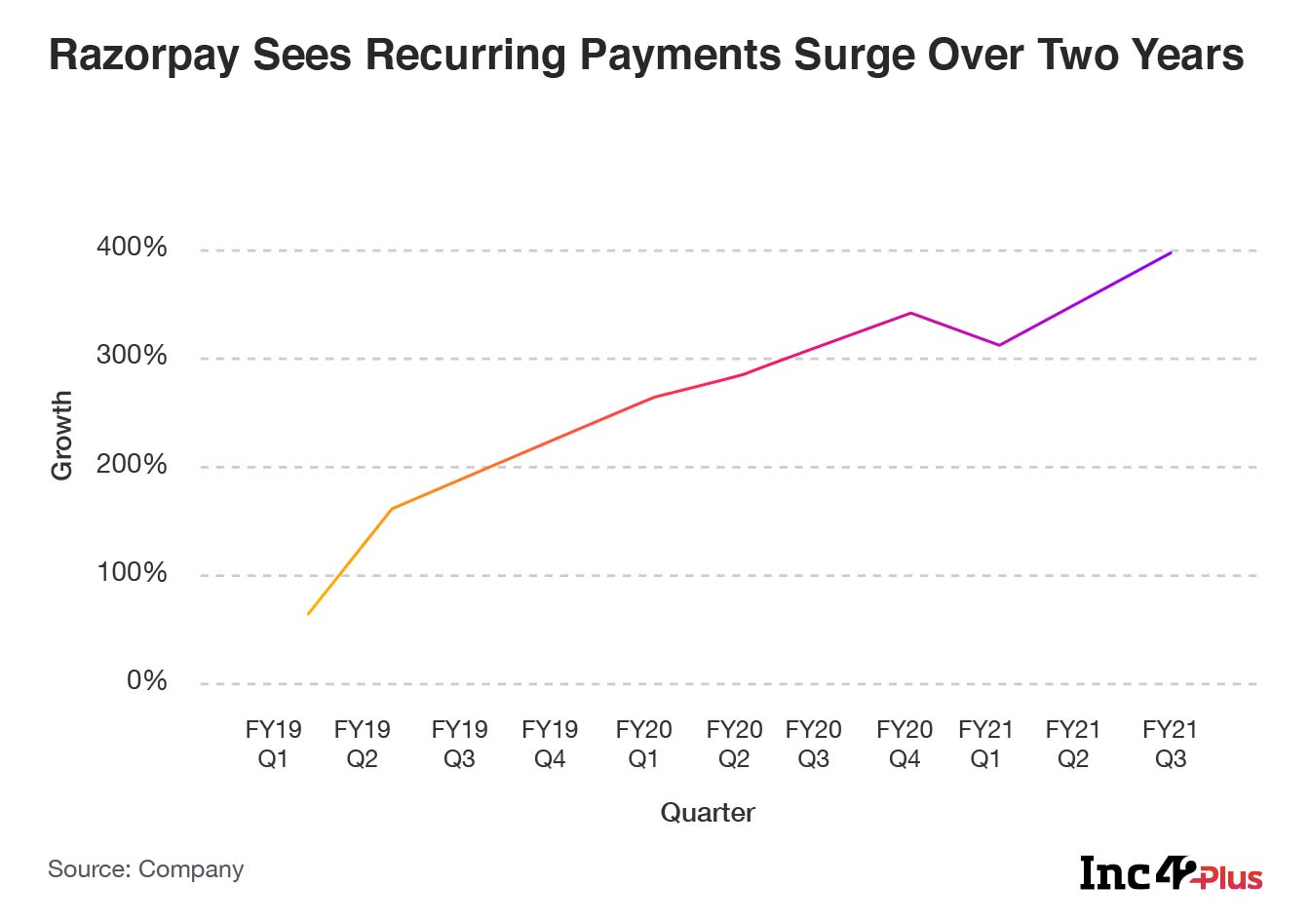
With the focus on recurring payments — a transaction type that ensures consistent volumes — the company has recently launched a Payment Button. It involves just two lines of code that any online merchant can copy-paste to start subscription payments. Razorpay had to go back to the drawing board to ensure minimal work for merchants if they wanted to accept recurring payments.
Although recurring payment via UPI is billed as the next big thing in the payments space, Razorpay has not taken its eye off other tried-and-trusted payment methods.
“We are super happy about the UPI scale-up, but we are innovating on all three payment methods (cards, net banking and UPI) side by side. We need to be the absolute best across all payment methods,” says Haria.
Last Updated: 3:35 PM, 23 February
The payment gateway landscape graphic was updated to include Paytm








